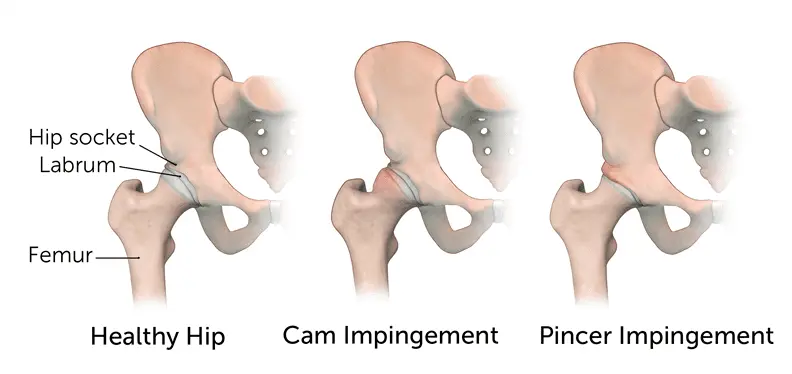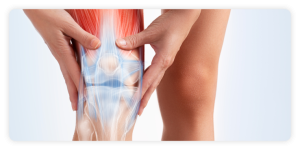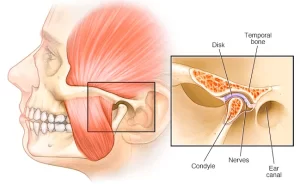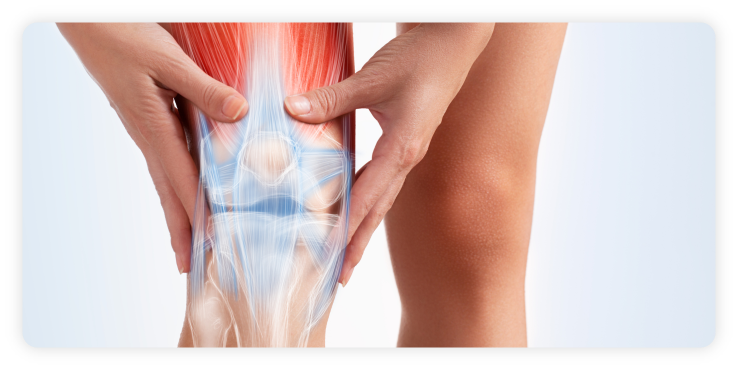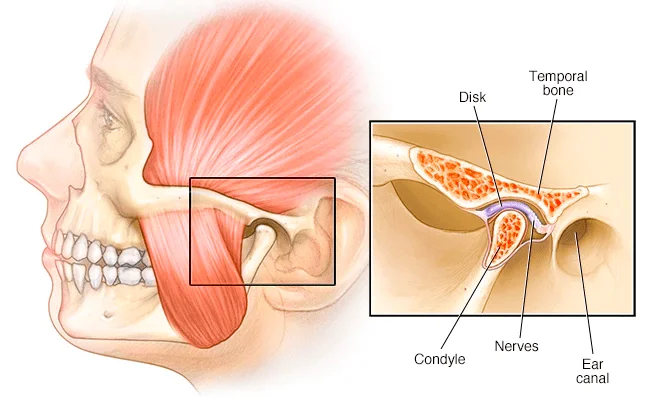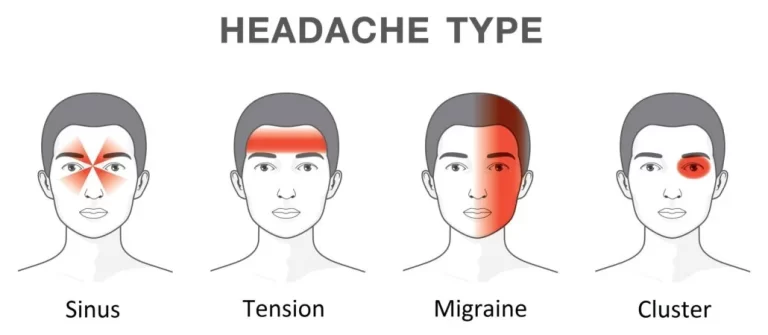What is Hip Impingement?
Femoroacetabular Impingement (FAI), also known as Hip Impingement, is a mechanical or structural disorder of the hip. It can occur in people of all ages, including adolescents and young adults. In the healthy hip, the rounded top of the thigh bone (femoral head) “plugs into” the hip socket (acetabular socket) in such a way that the femoral head can move smoothly within the socket. The ball and socket are lined with a thin layer of smooth cartilage that cushions and protects the bones, preventing them from rubbing or grinding against each other. The rim of the hip socket is lined with a special ridge of cartilage called the labrum that further helps to secure the femoral head in place inside the hip socket. Hip impingement occurs when something prevents the smooth, painless, and free movement of the ball-and-socket joint. Anyone can have hip impingement, though it is often diagnosed in active people in their 20s to 40s.
Types of Hip Impingement
There are three types of Femoroacetabular Impingement (FAI) namely Pincer, Cam, and Combined Impingement.
– Pincer Impingement occurs because extra bone extends out over the normal rim of the acetabulum. The labrum can be crushed under the prominent rim of the acetabulum.
– Cam Impingement is when the femoral head is not round and cannot rotate smoothly inside the acetabulum. A bump forms on the edge of the femoral head that grinds the cartilage inside the acetabulum.
– Combined Impingement just means that both the pincer and cam types are present.
Causes of Hip Impingement
Hip Impingement may be caused by a misshapen femoral head, deformed femoral neck, or a hip socket that covers too much of the femoral head. Over time, repetitive “bumping” or impingement of the femur on the rim of the acetabulum leads to cartilage and labrum damage.
People with hip impingement may have been born with a structurally abnormal ball-and-socket joint. In other cases, the hip joint may have become structurally abnormal during development. Repetitive activity involving recurrent movement of the legs beyond the normal range of motion may cause hip impingement, which has been observed in certain athletes (football, baseball, soccer, tennis, hockey, lacrosse players, dancers, and golfers). An injury may also cause symptoms of hip impingement. Further, certain conditions, such as Perthes disease and slipped capital femoral epiphysis (SCFE), may cause hip impingement.
Symptoms of Hip Impingement
The most common symptoms of hip impingement (FAI) include pain, stiffness, and limping. Pain often occurs in the groin area, although it may occur toward the outside of the hip. Turning, twisting, and squatting may cause sharp, stabbing pain. Sometimes, the pain is just a dull ache.
Hip Impingement Treatment
When an active person develops hip pain, but does not have severe symptoms or joint damage, physical therapy is recommended to help decrease pain, improve movement and avoid the progression of Hip Impingement. The goals of conservative management are to relieve pain, improve function by correcting muscle strength imbalances and alignment, and prevent future issues with the hip. A physical therapist may use modalities such as Cryotherapy, heat therapy, therapeutic ultrasound therapy, or electro-stimulation therapy. Additionally, manual therapy will be used to improve circulation and help decrease pain. Stretches and strengthening exercises to help improve the biomechanical function of the hip, the range of motion of the hip, and alter any muscle imbalances that may be present. When both legs have nearly equal strength with no pain, functional training will be incorporated to avoid recurrence of the injury. If in doubt, please seek professional advice.
Check out our popular articles: Diastasis Recti, Tight Back Muscles, Irritable Bowel Syndrome (IBS), Temporomandibular Joint (TMJ) Dysfunction, Tennis Elbow, Wrist Tendon Injury, Sciatica, Whiplash, Hernia, Herniated Disc (Slipped Disc).
